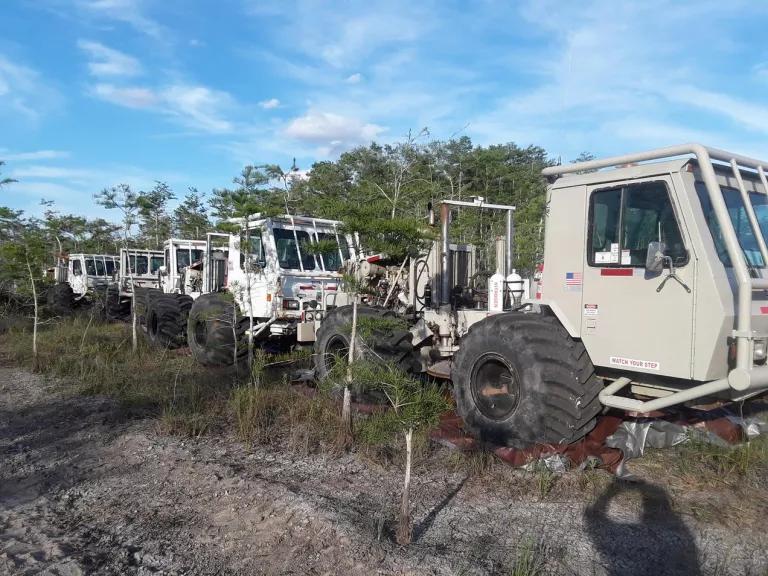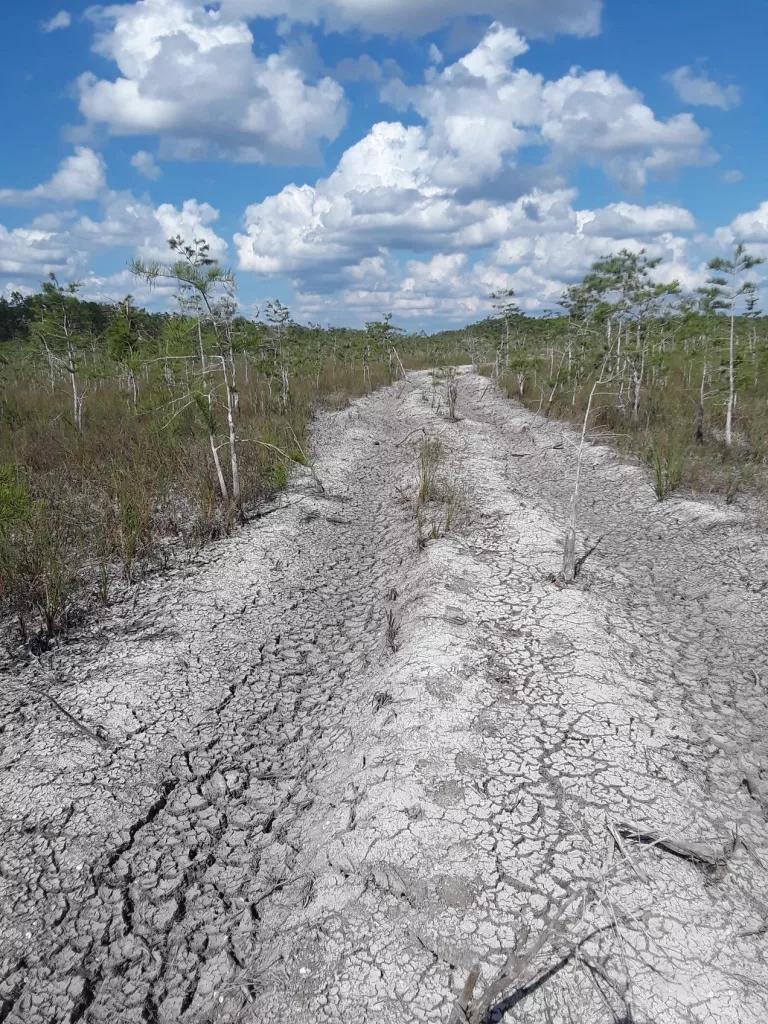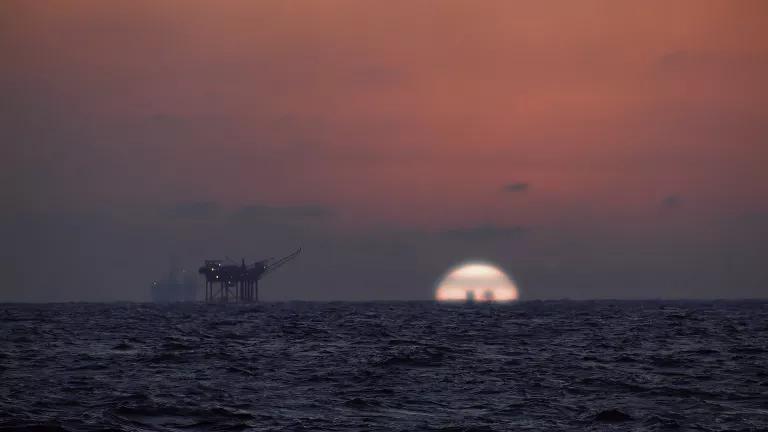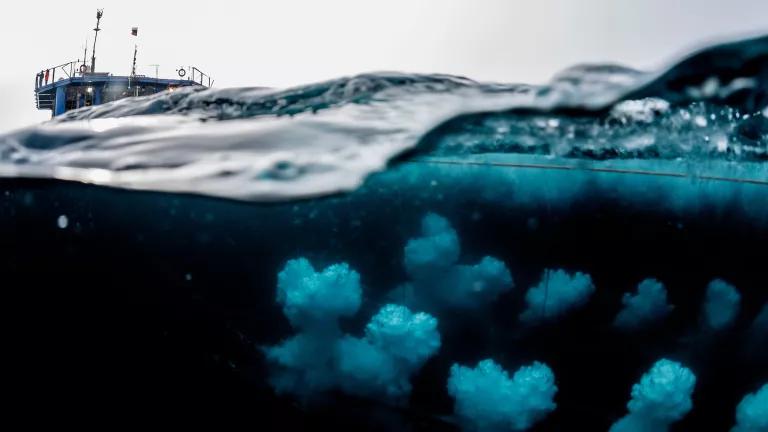Trump Administration Loosens Protection for Florida Wetlands
2020 is ending on a very low note for the environment in Florida, but there is still hope.

Big Cypress National Preserve
I grew up in south Florida and every time I return home for the holidays, it looks different. I notice more development of sensitive natural areas like wetlands and upland pine flatwoods to make way for sprawling cookie cutter gated residential developments and the commercial retail they attract. This is in addition to the visible lingering damage caused by oil exploration in the Everglades. Due to the global pandemic, I am unable to go home this holiday season like so many others, but the destruction of my home state’s dwindling natural areas weighs heavily on me throughout the year. And for good reason. In the midst of a public health crisis, the Trump Administration is busy rolling back protections for the Sunshine State’s precious resources like the Grinch Who Stole Christmas minus the eventual change of heart.
Oil and Gas Exploration & Development
For example, the Greater Everglades Ecosystem is currently under serious threats of increased oil and gas exploration and development. The Big Cypress National Preserve entered the new decade as the poster child for endangered National Park units and is well on its way to retaining the title. This is due, in part, to the damage caused by the Burnett Oil Company’s first phase of seismic testing for oil in the Preserve.
As we previously reported, the Burnett Oil Company damaged the Preserve by driving “vibroseis” vehicles weighing as much as 33 tons—similar in weight to the M4 Sherman tank used in World War II—off-road through wetland ecosystems and endangered Florida panther habitat, in search of more oil. Video footage taken from these damaging trucks can be viewed here. Nonetheless, the National Park Service and the Florida Department of Environmental Protection assert that the oil company has completed its effort to fix the damage.

Vibroseis vehicles in Big Cypress National Preserve
Our scientific findings tell a different story. A new report written by our Florida-based environmental consultants reveals continued bias in the oil company’s reporting methods. For example, the 33-ton vibroseis vehicles left behind tire tracks almost two feet deep in places. But the oil company doesn’t focus its monitoring on the tire tracks. Rather, it focuses on the areas between the vibroseis vehicle tire tracks where the undercarriage of the vibroseis vehicle passed through wetlands, instead of studying the full extent of the damage. This is in addition to other issues our consultants identified in a prior report. In short, our experts continue to opine that long‐term soil, hydrologic, and vegetation damage in Big Cypress persists.

Soil damage caused by vibroseis vehicles in Big Cypress National Preserve
Further, the oil company has not yet been required to complete any compensatory mitigation for the loss of wetland functions or Florida panther habitat. This means it continues to receive preferential treatment over other permittees in Florida and sends a message to industry that it’s okay to ignore legal requirements because they will not be enforced.
Instead of initiating an enforcement action, the Army Corps of Engineers—which initially agreed to treat the seismic testing as a regulated activity under the Clean Water Act after viewing the damage firsthand—further rewarded the oil company by reversing its decision to regulate. Ironically, this happened after the oil company complained that it was being treated unfairly.
Florida Assumes Federal Wetland Permitting Responsibilities
Since then, the Environmental Protection Agency (EPA) approved the state of Florida’s request to assume federal wetland permitting responsibilities from the Army Corps of Engineers. Only two other states have been granted this extraordinary privilege—Michigan and New Jersey. Florida’s developers have been pushing for this handover to the state for decades. However, the state’s main environmental permitting agency—the Florida Department of Environmental Protection—neither has the funding, nor the required number of staff, to process the sheer volume of permits that go along with this responsibility. And as we’ve seen with the oil exploration in Big Cypress, the Department’s formal enforcement of state environmental laws and permits, including those pertaining to wetlands, is already in decline and in need of serious improvement, according to a report by the Florida Public Employees for Environmental Responsibility. So, it is unclear how the agency will handle an increased workload.
Many conservation organizations oppose Florida’s assumption of federal wetland permitting because it could literally pave the way for more development in a state already under pressure from population growth, worsening hurricanes, and increased flooding. That includes NRDC and the Everglades Coalition we are a part of, which is made up of more than 60 organizations. There are also concerns about the loss of federal protections under the National Environmental Policy Act, Endangered Species Act, and National Historic Preservation Act. Worse still, the Miccosukee Tribe of Indians of Florida says that EPA did not initiate the required government-to-government consultation with tribes before approving the state’s request and they are concerned about the loss of culturally sensitive sites and the potential destruction of their way of life, which is integrally entwined with the Florida Everglades.
Off-road Vehicles
And while all of this was happening, the National Park Service released a Backcountry Access Plan that proposes to expand recreational off-road vehicle (ORV) access in Big Cypress National Preserve. The agency relied on decades’ old management plans to support its decision and failed to first complete a study of areas that could be eligible for wilderness protections, instead opening these lands up to potentially permanent damage, which could in turn make them ineligible for wilderness designation later.
The agency also failed to disclose to the public the cumulative impacts of recreational ORV use together with the damage already caused by oil exploration and development, or the adverse impacts to the many species of wildlife that call the Preserve home. For example, the agency failed to study the cumulative impacts of increased ORV access, along with oil exploration and development, a massive new toll road in southwest Florida, and surrounding residential and commercial development, on imperiled wildlife such as the Florida panther.
One such impact is a 45,000-acre new development that the Trump Administration included on its expedited list of projects developed pursuant to Executive Order 13927, “On Accelerating the Nation’s Economic Recovery from the COVID-19 Emergency by Expediting Infrastructure Investments and Other Activities.” Despite its misleading name—Eastern Collier County Multispecies Habitat Conservation Plan—this development would occur in primary Florida panther habitat and allow oil and gas development and mining in so-called “preserve” areas.
Threats to Wetlands
All of these actions threaten wetlands in Florida, which provide essential services to support clean water, resilience, and biodiversity. They also provide economic value because of the critical interstate industries such as tourism that rely heavily on visitors’ attraction to Florida’s natural environment.
None of these actions seriously consider that south Florida is ground zero for the adverse impacts associated with climate change, such as sea-level rise. Projections call for up to 31 inches of sea-level rise by 2060. Yet the Trump Administration continues to ignore or downplay the impacts of its decisions on the climate. Meanwhile, Florida cannot afford to lose any more natural areas to oil, residential and commercial development, roads, or motorized recreation. Wetlands, for example, are important natural solutions to the climate crisis, as they serve as carbon sinks and act as valuable buffers to flooding, including from hurricanes. Wetland communities should therefore be the focus of conservation strategies to enhance ecosystem services of climate regulation in south Florida.
Even worse, this is all happening during a global pandemic, which severely limits the ability of affected communities and concerned citizens to meaningfully participate in government decision-making. Public participation is also minimized when government agencies approve actions in isolation without disclosing the cumulative effects of all the actions together. For example, all of the above plans could have enormous consequences for the survival of endangered species like the Florida panther. With all of the proposed critical habitat loss, it is hard to imagine how the Florida panther could survive. There are only an estimated 230 individual cats remaining in the world.
2020 is ending on a very low note for the environment in Florida, but there is still hope.
The incoming Biden Administration intends to emphasize actions to address climate change as a top priority. This should include ending new fossil fuel exploration and development on our federal public lands – including Big Cypress National Preserve and other surrounding federal lands in the Everglades.
President-Elect Biden recently nominated the first Native American to serve as Secretary of the Department of the Interior, U.S. Representative Deb Haaland, who is also the lead sponsor of the “Thirty by Thirty Resolution to Save Nature (30x30),” which proposes to conserve at least 30 percent of U.S. lands and oceans by 2030. Protecting nature is one of the most cost-effective strategies in the fight to slow global warming and has support from Native leaders.
EPA should monitor whether the state of Florida is administering the wetland permitting program in accordance with Section 404 of the Clean Water Act. If it does not, the EPA Administrator could notify the state of appropriate corrective action, which, if not taken within a reasonable time, EPA could withdraw its approval of the program.
Also, the Sunshine State now ranks fourth in terms of solar potential in the U.S. This could be used as an antidote to dirty energy projects in the Everglades. Policies and incentives should be implemented to harness this potential using Smart from the Start siting principles.
All I want for Christmas is to visit natural Florida next holiday season. I hope it will still be there.

Alison Kelly in Big Cypress National Preserve


